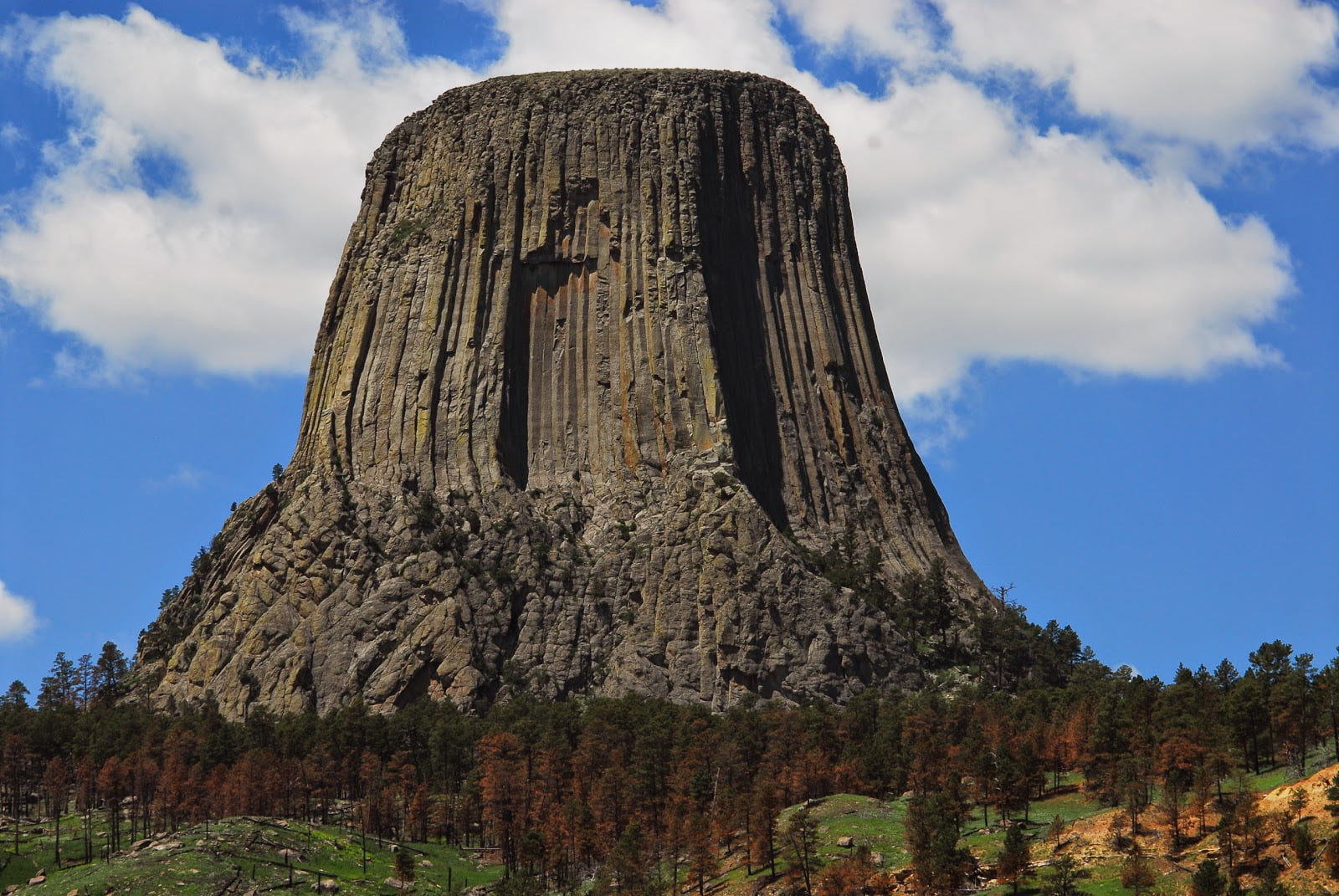I have seen a few videos over the last few years whose subject matter is gigantic trees. When I say gigantic, I mean of the Avatar variety of giant tree’s, if that’s a movie you’ve seen and can make reference to. There are people who believe that it’s possible that tree’s grew high enough to reach the clouds. I wanted to put my opinion out there on why I don’t think they are tree stumps, even though it’s a compelling and a lot more fun to think about as far as arguments go.

The best example I have seen on the ‘there were humungous trees in the past’ theory is Devils Tower. There’s a picture of it to the left. Now on first glance if you came upon this imposing structure out in nature no doubt you’d see it as a giant rock. It’s definitely unique as far as giant rocks go but on first site you might settle on the fact that it was simply some odd geographical rocky structure, but rocky nonetheless. If you look in the foreground of that picture you’ll see many tree’s which I’m going to guess are of the pine variety. Those actual tree’s stand 3 -5 stories (36 to 50 feet) and higher but if you compare them to Devils Tower, and imagine it as tree stump, it boggles the imagination just how big a tree that might have been. Looking at Devils Tower it’s very easy to see how some might equate it to the stump of a felled tree as it looks like the quintessential tree stump. The flat cut top, the tapering, even the base of the structure looks like a spreading root system.

On closer inspection of Devils Tower one notices it seems to be made up of columns. Innumerable basaltic columns majestically rise up and surround the imposing structure. It gives one the impression of giant column of string cheese jutting up from the ground and which has been peeling throughout the ages. But I have seen these types of columns or geographical oddities in other places. These are basalt columns formed through some type of geologic and volcanic processes that I don’t know too much about.

Some claim that Devils Tower might be the ‘plug’ of an extinct volcano which fell away from the structure through the ravages of time and erosion. This in fact is the scientific explanation. Devils Tower is what’s known as an igneous intrusion formed underground from molten lava rock. Devils Tower is a rare igneous rock called phonolite porphyry and is the largest example of what is known as ‘columnar jointing’. Columnar jointing is found throughout the world and another of the more famous cases of ‘columnar jointing’ is Fingols Cave, which can be found in Ireland, pictured here to the left. I live in Oregon and during my time here driving around the state I have spotted ‘columnar jointing’ high upon cliff sides and along the Columbia River.

I don’t believe it’s an ancient tree stump for a few reasons, the primary one being the scientific information stated above that of being standard basaltic columns that can be found the world over. Devils Tower is definitely unique in it’s shape but the geological processes that form such structures is relatively well known. Additional information I learned some time ago is that basalt columns, or ‘columnar jointing’ usually stems from being cooled in an unusual, usually quick, manner. The magma/lava which created the structures were cooled faster than normal and this is part of the process which creates the neat columns. Another reason I don’t believe Devil’s Tower is the petrified remains of a tree a stump is that I have seen petrified wood and it is more crumbly than columnar. Additionally petrified wood has a natural organic look to it and the coloring and patterns are instantly recognizable as petrified wood. I’ve never seen a chunk of Devils Tower but if there were chunks that did look like petrified wood, I would have found them throughout my research for this article.
